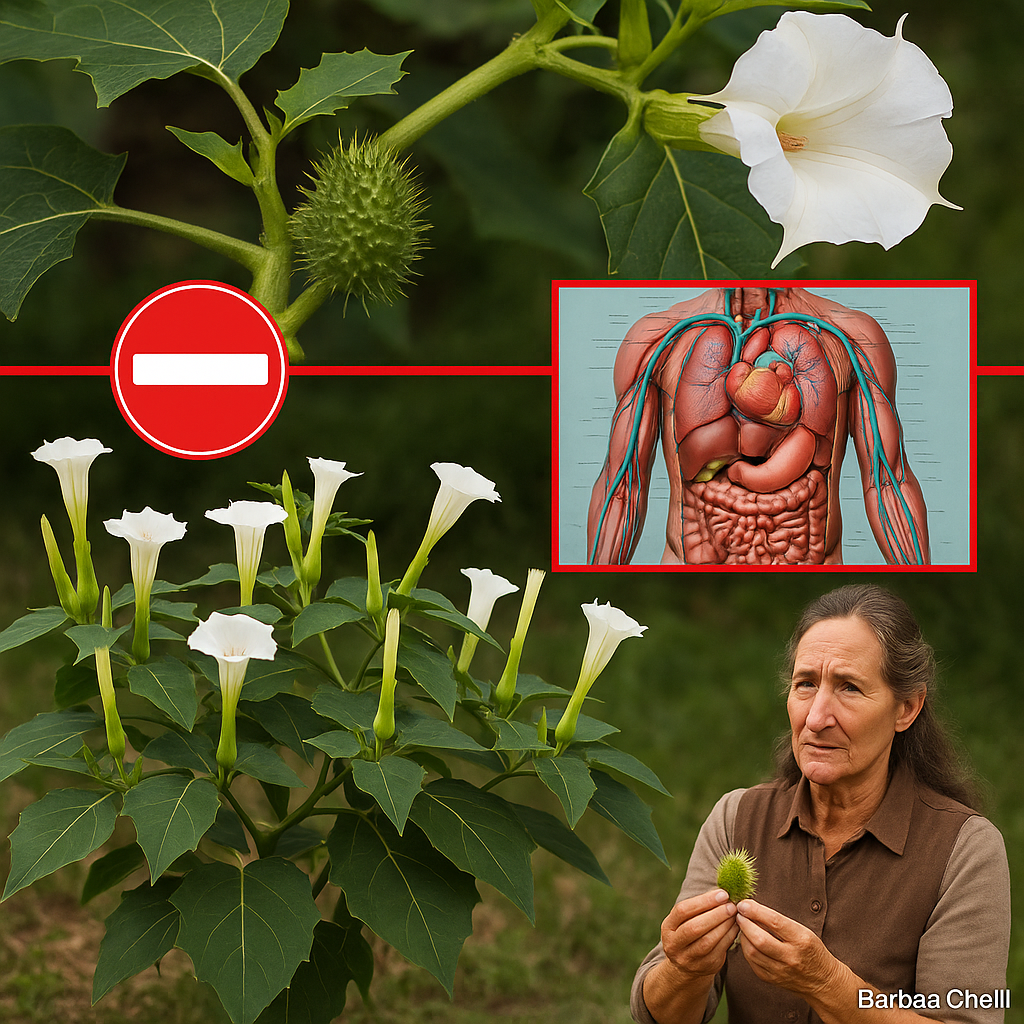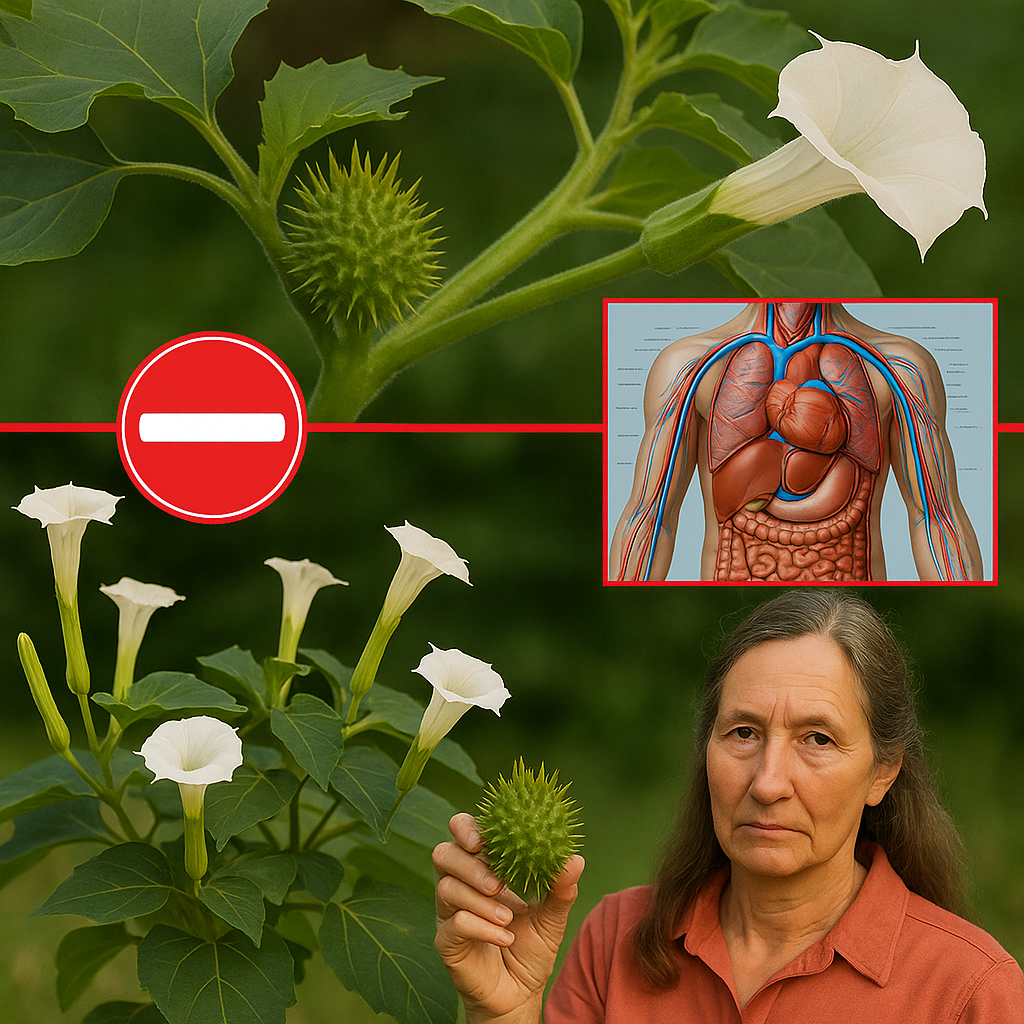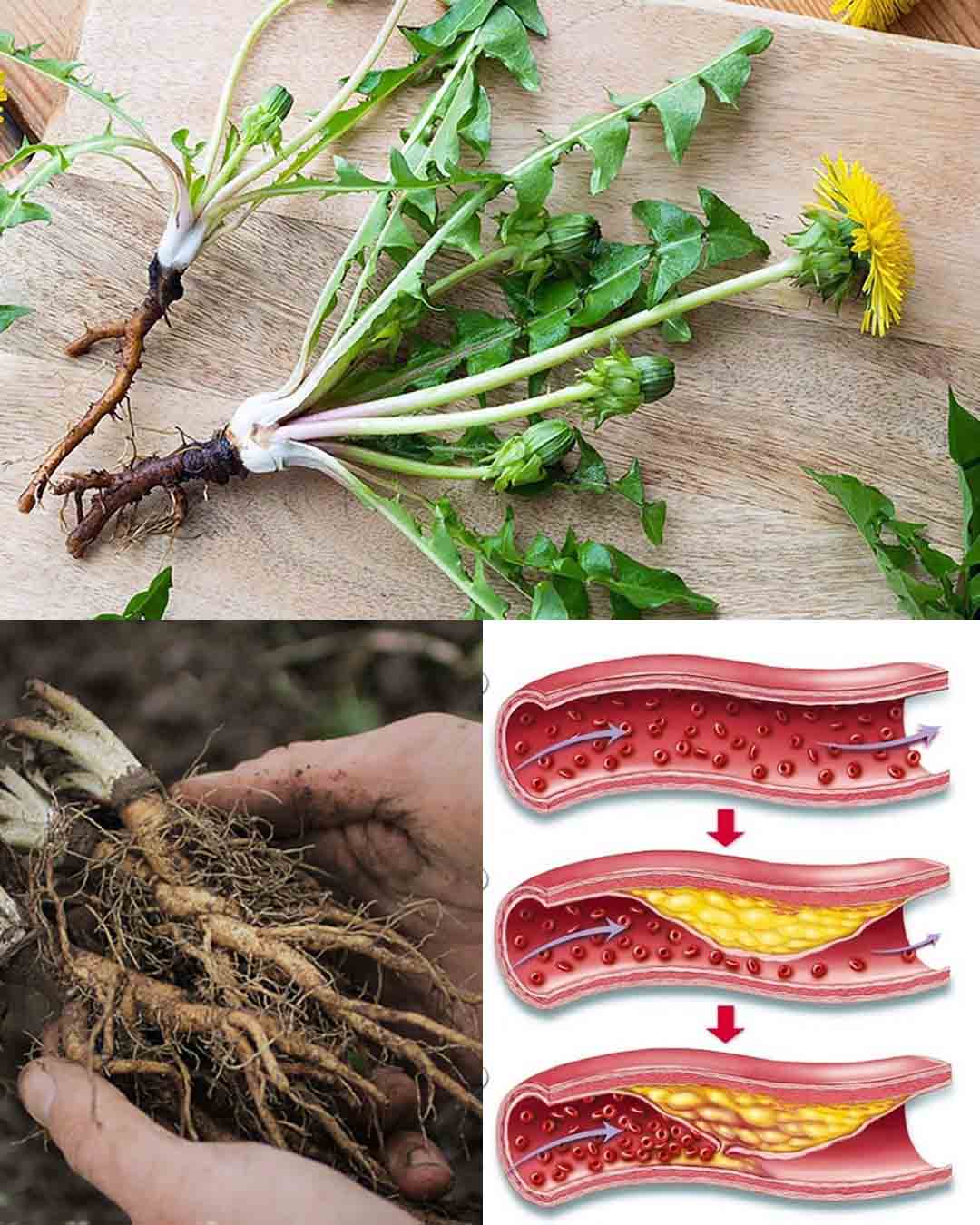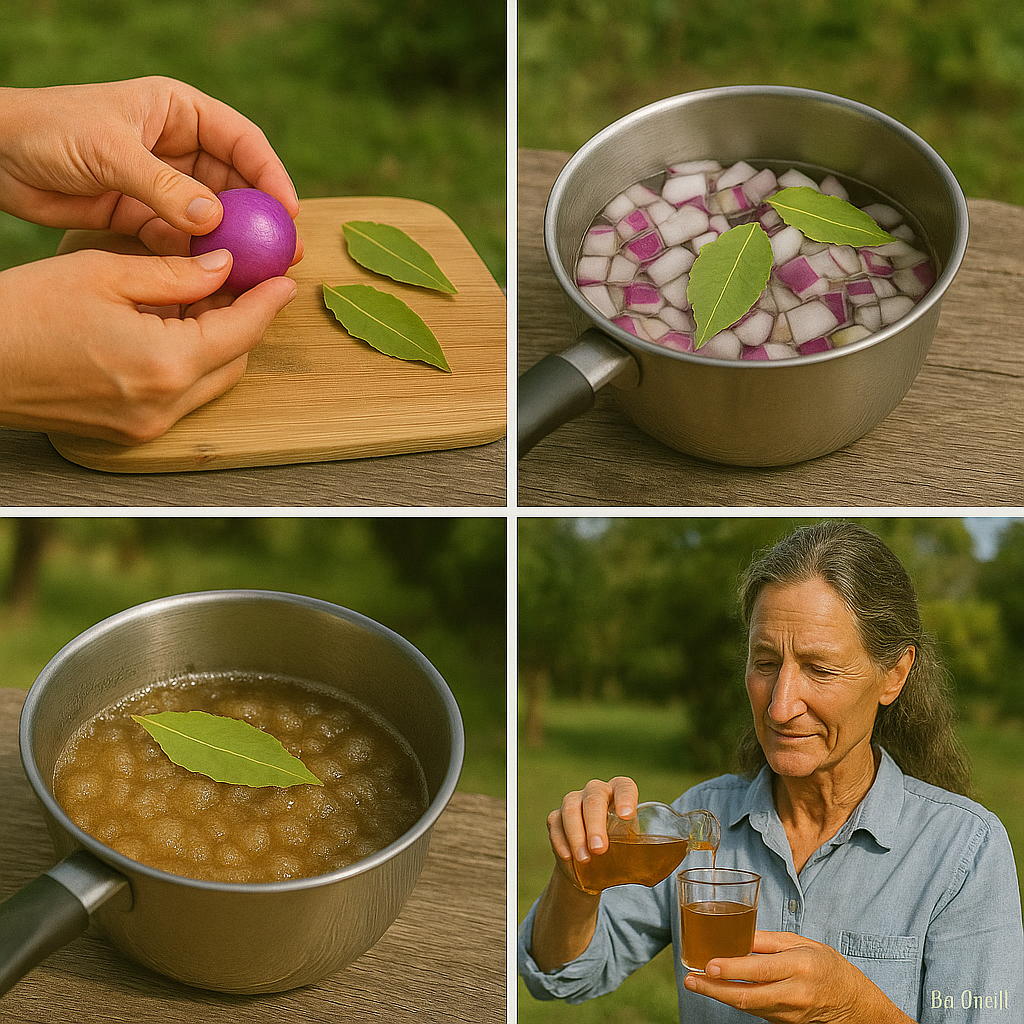🌸 At first glance, Datura plants are mesmerizing. Their giant trumpet-shaped flowers, their sweet fragrance, and their mysterious beauty make them irresistible to gardeners and nature lovers alike. But hidden behind that beauty is a silent danger — a danger so powerful that even touching the plant could put your life at risk.
👀 What makes Datura so lethal? Why do experts warn you to stay away from it, even when it seems harmless? Today, you are about to discover the darker side of one of the world’s most dangerously enchanting plants.

🌿 What Is the Datura Genus?
Datura belongs to the infamous nightshade family, Solanaceae. These plants originated in the Americas but have now spread across the world, flourishing in disturbed soils, abandoned lots, and even home gardens where their showy flowers fool unsuspecting admirers.
Identified by their large, trumpet-like blooms in shades of white, purple, or yellow and their wickedly spiked seed pods, Datura plants lure the eye. But beneath their elegance lies an arsenal of potent toxins ready to cause havoc to anyone who gets too close.
🌼 Common Species of Datura You Must Recognize
🌟 Datura stramonium (Jimsonweed or Thorn Apple)
Famous for its white or purple flowers and sharp seed pods. It has hallucinogenic properties, but even a small taste can lead to life-threatening poisoning.
🌟 Datura metel (Horn of Plenty)
Adorned with lush flowers in white, yellow, or deep purple, this species is sometimes grown for its beauty. However, its toxic nature makes it just as dangerous as its wild cousins.
🌟 Datura inoxia (Moonflower)
Fragrant, night-blooming, and stunningly white, this species often gets mistaken for safer plants. But its seeds and flowers harbor an intense concentration of poison.
🌟 Datura ferox (Long-spined Thorn Apple)
Known for its massive, fiercely spiked seed pods. This species is among the most toxic, carrying extremely high levels of deadly alkaloids.
Knowing how to identify these plants could be the difference between safety and disaster.
☠️ The Toxic Secret Behind Datura’s Beauty
Hidden inside every part of the Datura plant are three deadly alkaloids:
🧪 Atropine
🧪 Scopolamine
🧪 Hyoscyamine
These compounds attack the central nervous system, causing terrifying hallucinations, violent confusion, and in severe cases, death. What makes Datura even more dangerous is that the potency of these alkaloids varies wildly, even between two plants growing side by side. There is no “safe” dose.
🚨 Symptoms of Datura Poisoning: Know the Warning Signs
If you or someone else comes into contact with Datura, recognizing the symptoms quickly could save a life:
🔥 Hallucinations and Delirium: Vivid, often frightening visions are common and can cause dangerous behavior.
🔥 Dilated Pupils and Blurred Vision: Victims often experience intense light sensitivity and distorted vision.
🔥 Dry Mouth and Trouble Swallowing: A hallmark sign of atropine toxicity, making even breathing difficult.
🔥 Rapid Heartbeat and High Blood Pressure: The heart races dangerously, putting immense strain on the body.
🔥 Seizures, Coma, and Death: In severe cases, poisoning can escalate rapidly, leading to fatal respiratory failure.
The chilling reality is that even a few seeds or a nibble on a leaf can trigger a medical emergency.
🐾 A Deadly Threat to Pets and Livestock Too
Datura’s threat extends beyond humans. Dogs, cats, horses, and livestock are equally vulnerable. Animals are often drawn to the plant’s sweet scent and colorful blooms, unaware of the fatal trap. Protect your pets and farm animals by learning to spot Datura and removing it from any space they roam.
🛡️ How to Stay Safe Around Datura
To protect yourself and your loved ones:
✅ Avoid touching the plant with bare hands. Always use gloves if removal is necessary.
✅ Teach children about the dangers of “pretty” plants like Datura to prevent accidental contact.
✅ Remove any Datura plants you find growing near homes, parks, or walking paths.
✅ Dispose of the plants carefully, ensuring they are out of reach from humans and animals.
✅ Stay alert during hikes, gardening, or any outdoor activities where wild plants are abundant.
Remember, prevention is the only cure when it comes to Datura exposure.

🧠 Why You Should Never Underestimate Datura
It is easy to be fooled by Datura’s breathtaking flowers and romantic night blooms. But behind that beauty is a history of tragedy, folklore warnings, and poisonings across centuries. No matter how experienced you are with plants, Datura’s unpredictable nature makes it too dangerous to handle or cultivate.
Every seed, every leaf, every flower is a gamble with your life.
⚡ Final Thoughts: Beauty Isn’t Always Safe
Nature often hides its deadliest secrets behind the most beautiful facades. Datura is living proof. Its stunning flowers may invite admiration, but the consequences of a single careless touch could be devastating.
Stay curious, but stay cautious. Respect the beauty of Datura from a safe distance, and educate others about its dangers. Awareness is the strongest protection you can carry.
🌟 If you ever encounter this plant in the wild or in a neighbor’s garden, admire it with your eyes only — and move on. Your safety is worth far more than a few moments of fascination.


